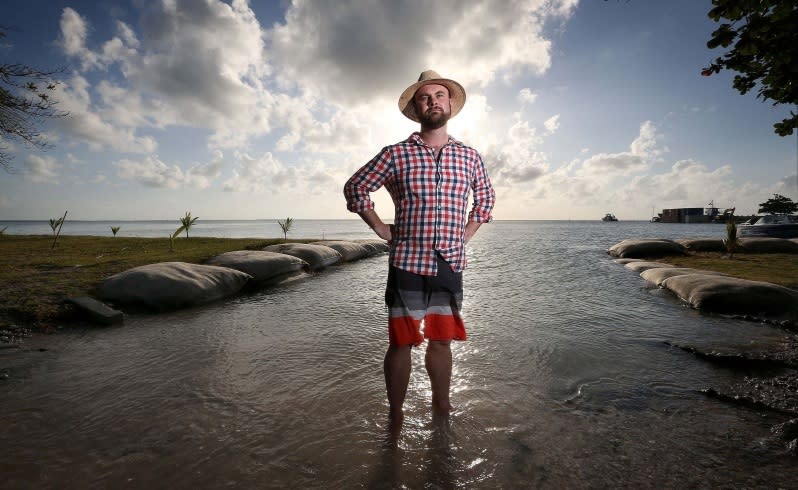Families honour Cocos naval battle
They are just a few tiny dots on the map half way between the North West and the rest of the world.
Palm trees jostle for the sun all the way down to the turquoise waters that lap the shore.
Yesterday a common theme drifted around on the warm tropical island air: it seems way too nice a place to fight a war.
But about 200 dignitaries and descendants of crew members of HMAS Sydney and SMS Emden gathered to remember one of the opening battles of World War I.
The ceremony incorporated the dedication of the Sydney-Emden friendship mast, which carries replicas of the bells from both ships.
And it was a powerful symbol of how two nations which were once at war have since become firm friends.
The ships came head-to-head on November 9, 1914.
The Sydney had been escorting a convoy carrying Australian and New Zealand troops to Egypt, where they would train for the landing at Gallipoli the next year.
The ship broke away from the convoy after a message from the Emden was intercepted by the wireless and cable station at Cocos.
The Emden, which for 12 weeks had been disrupting Allied shipping in the Indian Ocean, was on its way to Cocos to destroy the strategically important station.
Governor-General Sir Peter Cosgrove told the commemoration that the battle was the coming of age for Australia's fledgling navy, which recorded the nation's first victory at sea.
He said the Emden had already proved its credentials, sinking or capturing 24 commercial vessels and destroying Russian and French warships, but doing so with a humanitarian spirit which saw it inflict just one death.
In the battle with the Sydney, the Emden was all but destroyed and its captain, Karl von Muller, ordered it beached at North Keeling Island, just north of Cocos.
Four men on the Sydney were killed and 12 wounded, while 134 German sailors were killed or died from their wounds and 70 others were injured.
Chief of Navy, Vice Admiral Tim Barrett, said the skill and determination shown by both ships' companies in battle and the compassion afterwards forged a respect between two maritime nations.
German Ambassador to Australia Christoph Muller said the crews had long been a source of inspiration.
"It shows how the bonds of humanity can be stronger than war and death, and there can be mateship across the gulf of enmity," he said.
Dr Muller said the battle showed "we should never send our young men into war against nations which should not be our enemies but our partners and friends".
Perhaps the most symbolic moment of how the twists of history have bound, fractured and rebound the fate of the two nations came as the bugle notes of the Last Post hung in the air and Australian Army Capt. Yoni Levy lowered a flag.
It was not the Australian flag. While he is a proud Australian, Capt. Levy's personal link is not to the Sydney, but to the Emden.
His great-grandfather's cousin Gustav Levy was on the Emden and died in the battle, 25 years before Capt. Levy's branch of the family migrated to Australia.
Capt. Levy said taking part in the ceremony had been an emotional moment which had connected him to his family's history.
Martina Klein-Emden, whose grandfather Paul Klein was on the Emden, said travelling to Cocos had given her a new perspective on how he must have felt.
"They were just young men on the other side of the world," Ms Klein-Emden said.
Federal MP for Cowan, Luke Simpkins, delivered a message from Prime Minister Tony Abbott, saying the ceremony was not to glorify war, but "acknowledge that the worst of times can bring out the best in all of us".
Craig Fotheringham, who travelled from Sydney for the ceremony, said his grandfather Ernie Boston was just 16 and a messenger on the Sydney when it took on the Emden.
His grandfather visited Emden survivors in Germany years after the war and it was wonderful to meet Emden families at Cocos.



